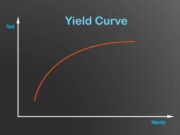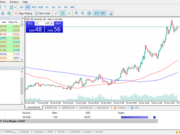
What is ‘Idiosyncratic Risk’
Idiosyncratic risk, also referred to as unsystematic risk, is the risk that is endemic to a particular asset such as a stock and not a whole investment portfolio. Being the opposite of systematic risk (the overall risk that affects all assets like fluctuations in the stock market or interest rates), Idiosyncratic risk can be mitigated through diversification in an investment portfolio.
Explaining ‘Idiosyncratic Risk’
Idiosyncratic risk can be thought of as the factors that affect an asset such as a stock and its underlying company at the microeconomic level. Idiosyncratic risk has little or no correlation with market risk, and can therefore be substantially mitigated or eliminated from a portfolio by using adequate diversification. Research suggests that idiosyncratic risk accounts for most of the variation in the risk of an individual stock over time rather than market risk. Since idiosyncratic risk is by definition generally unpredictable, investors seek to minimize its negative impact on an investment portfolio by diversification or hedging.
Examples of Idiosyncratic Risk
All pipeline companies, and their stocks, face the idiosyncratic risk that their pipelines may become damaged, leak oil and bring about repair expenses, lawsuits or fines from government agencies. Unfortunate circumstances like these may cause the company to decrease distributions to investors and cause the stock to fall in price. The risk of a pipeline company incurring massive damages because of an oil spill can be mitigated by investing in a broad cross-section of stocks within the portfolio. A macroeconomic factor, however, cannot be diversified away as it affects not only pipeline stocks but all stocks. If interest rates rise, for example, the value of a pipeline company’s stock will likely fall in line with all other stocks. That is systematic risk.
How to identify idiosyncratic risk in your portfolio
Idiosyncratic risk is the risk that’s specific to a particular stock, and it can be hard to spot. Here are a few things to look for:
First, check the volatility of the stock. If it’s much higher than the market average, that’s a good sign that there’s some idiosyncratic risk. Second, look at the beta value. A high beta means that the stock is more volatile than the market; a low beta means it’s less volatile. Again, this is an indicator of idiosyncratic risk. Finally, look at the historical performance of the stock. If it has consistently underperformed the market, that’s another sign that there’s some idiosyncratic risk.
Keep an eye out for these signs, and you’ll be able to spot idiosyncratic risk in your portfolio.
How to manage idiosyncratic risk
One of the most important aspects of risk management is understanding how to handle idiosyncratic risk. This type of risk is specific to a certain individual, company, or situation, and it can be difficult to predict or anticipate. While there are a variety of ways to manage idiosyncratic risk, one of the most effective is to diversify your portfolio. By investing in a variety of assets, you can help to offset any losses that may occur as a result of specific risks. Additionally, it is important to have a clear understanding of your exposures and to regularly review your portfolio for any changes. By taking these steps, you can help to minimize the effect of idiosyncratic risk on your overall financial health.
Examples of companies that faced significant idiosyncratic risk
One example of a company that faced significant idiosyncratic risk is Lehman Brothers. In 2008, the financial crisis hit and Lehman Brothers was one of the hardest hit firms. The firm filed for bankruptcy and its share price plunged. Another example is BP. In 2010, the Deepwater Horizon oil spill occurred and BP was responsible. The spill caused extensive environmental damage and BP’s share price fell sharply as a result. These are just two examples of companies that have faced significant idiosyncratic risk. While it can be difficult to manage, there are ways to mitigate this type of risk and protect your company from potential losses.
The benefits of diversifying your portfolio with exposure to different types of idiosyncratic risk
Individual stocks are exposed to a variety of risks, including idiosyncratic risk, which is specific to a particular company or industry. While diversification across different asset classes can help to reduce portfolio risk, it may not always be possible to eliminate all sources of risk. However, diversifying your portfolio with exposure to different types of idiosyncratic risk can help to reduce the overall volatility of your portfolio and improve your long-term returns. For example, by investing in both large and small companies, you can help to offset the risk associated with a single company or sector.
In addition, investing in both domestic and international companies can help to mitigate the impact of political or economic conditions in any one country. By taking advantage of the benefits of diversification, you can help to protect your portfolio from the effects of unforeseen events.
Common Idiosyncratic Risks
Company management’s decisions on financial policy, investment policy and operations are all idiosyncratic risks specific to a particular company and stock. Other examples can include location of operations and company culture. In contrast, nonidiosyncratic risks may include interest rates, inflation, economic growth or tax policy.


































